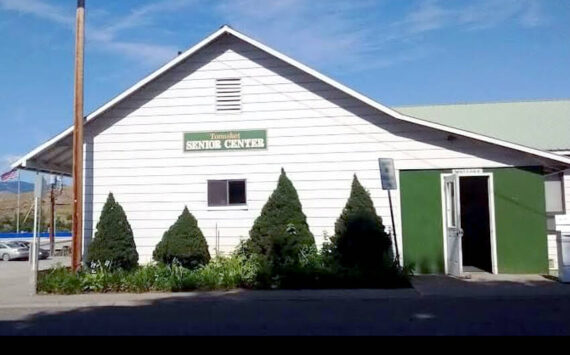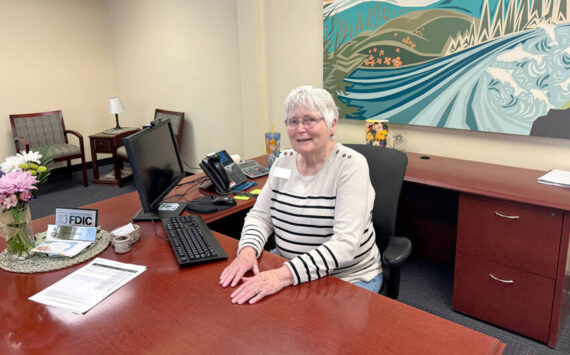Replacing aging cardiac monitor, endoscope
TONASKET – North Valley Hospital registered two patients over 103 years old in 2015, according to Jana Symonds in her year-end report at North Valley Hospital’s January 28 board meeting.
If investing in high-quality equipment helps more Okanogan County residents live longer along with increasing hospital revenue, NVH is on the right track.
“Investing revenue back into equipment is what we are about,” said NVH Board Member Herb Wandler.
The comment was in response to Board Member Adam Tibbs questioning a request made by NVH’s Kelly Cariker for a new GE Cardiac Monitor System at a cost of $99,818.16.
“It’s a very expensive system, but this does all our cardiac monitoring,” said Cariker. “We want to do anything we can for the safety of our residents within the zip code.”
Cariker said the hospital’s current cardiac system is “well past it’s end of life and starting to be a concern, as they no longer make parts for it.” Cariker said a new system system was budgeted in last year, and vendors brought in different equipment for staff to test. The GE model they chose is compatible with the system already in place
Cariker said they budgeted almost $118,000 for a new system, and CEO Mike Zwicker had negotiated a steep discount to bring the price down to under $100,000.
The new system will access directly into the hospital’s computer system, bypassing the possibility of human error retyping in vital signs read electronically.
“It’s more the standard of care in larger facilities,” said Cariker. “We would be the first Critical Access Hospital (CAH) in the state to have this.” STATE OR COUNTY?
“We owe it to our patients,” said Zwicker. “Anyone with any type of cardiac monitoring that needs done needs this equipment. We don’t want to be in a position to have to ship anyone out.”
When Tibbs asked why the request was being made now, Cariker said he didn’t want to wait until the current system failed to order the new one.
“This isn’t something you can bring in a vendor and get it installed in a week,” said Cariker. “This can take up to a month to get installed.”
“We want this for best practice,” added Zwicker. “When anyone comes into ER it is best to monitor them; it’s one of the first things we do.”
“The system we have now is older equipment and we always worry about the viability of equipment over five years old. Anytime something is five to seven years old it becomes obsolete; technology is always changing,” explained Cariker.
“This is one of those pieces of equipment we can’t get away with not having,” said Helen CASEY.
When Tibbs asked how often the system was used on patients, Symonds said it was used on 538 (IN THE LAST MONTH?)
Surgeon Trevor Rise said every time he has been on the floor, at least one patient was being monitored on the system.
The motion was moved and seconded to purchase the cardiac unit, with no one opposed.
Rise next approached the board torequest the purchase of a Pentax HD endoscopic system with a five year service contract at a cost of $155,362.54.
“This is a capital budget item that has been on the agenda the past six years.,” said Rise, adding the hospital does over 200 procedures per year; a service the hospital has been providing for almost 20 years.
“Our current system is over ten years old, and in medical years that’s a long time. We’re going on year 14, so it is past it’s life expectancy,” said Rise, adding he had just received a letter from Olympus saying the hospital’s current model was no longer supported.
Pentax sales representative Mark Pyle said that Olympus owns 80 percent of the market on this equipment, thus they were able to dictate to hospitals when they needed to update their systems.
“We knew this day was coming and it is here,” Rise said.
Rise said the hospital in Republic has the Pentax system. “I took my surgery tech up there and we looked at it and we both like it. They have had it two years and are very pleased with it.”
Dr. Sebesta performed five procedures over a two-day trial run with the equipment.
“It’s like the difference between driving a 1953 Chevy and a brand new one,” said Sebesta. “You can see the entire colon at once so you don’t have to move the scope around.”
“Plus you get a better quality picture,” said Rise. “The old system is not even comparable; the clarity difference between the two is incredible.”
The system has interchangeable equipment for both upper and lower scopes so doctors can perform pulmonary as well as gastrointestinal procedures.
“So if you do decide to go into pulmonary work you don’t have to go out and buy another scope,” said Pyle.
“I do six or eight scopes a week here, and they need this,” said Sebesta. “This would work for lung cancer or colon cancer.”
When Tibbs asked why the hospital was choosing to switch over to Pentax when Olympus owned the majority of the market, Rise responded price was one factor; a new Olympus model cost closer to $200,000.
“Most major teaching institutions all use Pentax,” said Rise.
“This has been talked about in the budget for quite a long time,” said Board Director Helen Casey.
Board member Dick Larson moved to approve the purchase and Wandler seconded the motion.




